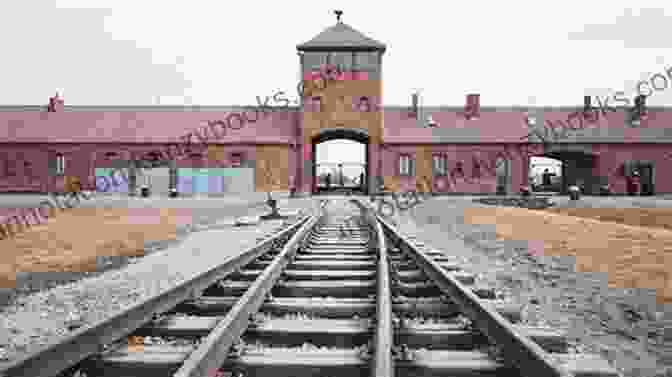Unveiling the Hidden Truth: Camps and Other Detention Facilities under the German Armed Forces

During the era of German military domination, the establishment of camps and detention facilities played a pivotal role in the regime's oppressive agenda. These institutions served as instruments of control, confinement, and deprivation, housing countless individuals who posed a perceived threat to the Nazi ideology. This article delves into the grim reality of these camps and detention facilities, shedding light on their purpose, operation, and the suffering inflicted upon their inmates. Through historical accounts, eyewitness testimonies, and archival research, we will uncover the dark legacy that lingers within the walls of these infamous sites.
The Rise of Concentration Camps
As the Nazi regime tightened its grip on Germany and embarked on its path of conquest, the need for systematic suppression of dissent and persecution of minority groups became increasingly apparent. In 1933, the first concentration camp was established in Dachau, serving as a model for a vast network of similar facilities that would spread across occupied Europe. These camps were designed to isolate and control political opponents, Jews, homosexuals, Roma, and other groups deemed enemies of the state.
4.7 out of 5
| Language | : | English |
| File size | : | 89510 KB |
| Text-to-Speech | : | Enabled |
| Enhanced typesetting | : | Enabled |
| Word Wise | : | Enabled |
| Screen Reader | : | Supported |
| Print length | : | 3040 pages |
Conditions within the camps were horrific, characterized by overcrowding, malnutrition, disease, and rampant abuse. Prisoners were subjected to forced labor, medical experiments, and systematic torture. The ultimate goal of these camps was to break the will of the inmates, reducing them to mere shadows of their former selves.
Forced Labor and Extermination
As the war progressed, the Nazi regime expanded its network of camps and introduced a system of forced labor, exploiting prisoners as a source of cheap labor for the war effort. Many camps were converted into factories, workshops, and mines, where inmates were forced to work under inhumane conditions, often to the point of exhaustion and death.
The most notorious chapter in the history of concentration camps is the Holocaust, the systematic extermination of millions of Jews. Six extermination camps were established in occupied Poland, where gas chambers and crematoria were used to carry out mass murder on an industrial scale. The horrors of Auschwitz-Birkenau, Treblinka, and other extermination camps have become synonymous with the depths of human depravity.
Prisoner of War Camps
In addition to concentration camps, the German armed forces also operated a system of prisoner of war (POW) camps during World War II. While conditions in POW camps varied, many prisoners faced harsh treatment, malnutrition, and disease. Some POW camps were notorious for their brutality, such as Stalag Luft III, where Allied airmen were held captive.
The Geneva Convention, signed in 1929, established international standards for the treatment of POWs. However, these standards were often violated by the German military, leading to widespread suffering and death among prisoners of war.
Post-War Legacy
The defeat of Nazi Germany in 1945 brought an end to the horrors of the concentration camps and POW facilities. Many of these sites were liberated by Allied forces, revealing the extent of the atrocities that had been committed. The survivors of these camps became powerful witnesses to the horrors of the Holocaust and other Nazi crimes.
In the decades since the war, many of the former concentration camps have been preserved as memorials and museums, serving as a reminder of the victims and the dangers of fascism and intolerance. These sites are a testament to the resilience of the human spirit and a warning against the repetition of past atrocities.
The camps and detention facilities operated by the German armed forces during World War II were a dark chapter in human history. These institutions were tools of oppression and extermination, where countless individuals suffered and died. The horrors of the Holocaust and other atrocities committed in these camps must never be forgotten.
By understanding the history of these camps, we can honor the victims and work to prevent such atrocities from ever happening again. The legacy of these sites is one of pain and suffering, but it is also a reminder of the resilience of the human spirit and the importance of fighting against tyranny and intolerance.
Image Descriptions



4.7 out of 5
| Language | : | English |
| File size | : | 89510 KB |
| Text-to-Speech | : | Enabled |
| Enhanced typesetting | : | Enabled |
| Word Wise | : | Enabled |
| Screen Reader | : | Supported |
| Print length | : | 3040 pages |
Do you want to contribute by writing guest posts on this blog?
Please contact us and send us a resume of previous articles that you have written.
 Book
Book Novel
Novel Page
Page Chapter
Chapter Text
Text Story
Story Genre
Genre Reader
Reader Library
Library Paperback
Paperback E-book
E-book Magazine
Magazine Newspaper
Newspaper Paragraph
Paragraph Sentence
Sentence Bookmark
Bookmark Shelf
Shelf Glossary
Glossary Bibliography
Bibliography Foreword
Foreword Preface
Preface Synopsis
Synopsis Annotation
Annotation Footnote
Footnote Manuscript
Manuscript Scroll
Scroll Codex
Codex Tome
Tome Bestseller
Bestseller Classics
Classics Library card
Library card Narrative
Narrative Biography
Biography Autobiography
Autobiography Memoir
Memoir Reference
Reference Encyclopedia
Encyclopedia George Mahood
George Mahood Great World Press
Great World Press Sonnet Lauberth
Sonnet Lauberth Pantelis Tsoumanis
Pantelis Tsoumanis George Browne Md
George Browne Md Nikky Robinette
Nikky Robinette Kimberly A Houser
Kimberly A Houser Hsiao Ching Chou
Hsiao Ching Chou Samar Yorde
Samar Yorde Melanie Adams
Melanie Adams Rebecca West
Rebecca West Sharon Hart Green
Sharon Hart Green Steven Ray Ozanich
Steven Ray Ozanich Gigi Rosenberg
Gigi Rosenberg Gennifer Choldenko
Gennifer Choldenko Jen Walker
Jen Walker Michael W Fox
Michael W Fox Sunanda Rudraraju
Sunanda Rudraraju Katherine Barber
Katherine Barber Gill Parkinson
Gill Parkinson
Light bulbAdvertise smarter! Our strategic ad space ensures maximum exposure. Reserve your spot today!

 Kyle PowellCopenhagen Food Stories: Traditions and Recipes - A Culinary Journey into the...
Kyle PowellCopenhagen Food Stories: Traditions and Recipes - A Culinary Journey into the...
 Mason PowellDiscover the Gourmia Air Fryer Cookbook: Your Ultimate Guide to Effortless...
Mason PowellDiscover the Gourmia Air Fryer Cookbook: Your Ultimate Guide to Effortless... Stan WardFollow ·16.5k
Stan WardFollow ·16.5k Aubrey BlairFollow ·10.8k
Aubrey BlairFollow ·10.8k Denzel HayesFollow ·10.9k
Denzel HayesFollow ·10.9k Gustavo CoxFollow ·17.9k
Gustavo CoxFollow ·17.9k Jamie BlairFollow ·5k
Jamie BlairFollow ·5k Pat MitchellFollow ·11.7k
Pat MitchellFollow ·11.7k Quentin PowellFollow ·16.6k
Quentin PowellFollow ·16.6k Rubén DaríoFollow ·8.1k
Rubén DaríoFollow ·8.1k

 Gary Reed
Gary ReedFix It & Forget It Slow Cooker Dump Dinners &...
Are you ready to...

 Corey Hayes
Corey HayesUnlock the Secrets of Addictive Behavior: Dive into the...
In the face of the prevalent global addiction...

 Harvey Bell
Harvey BellHistorical Atlas of Indonesia by Robert Cribb: A Journey...
Embark on an...

 Allen Ginsberg
Allen GinsbergUnveiling Cosmic Truths: A Message from the Confederation...
Confederation of Planets Prepare to...

 Ernest Hemingway
Ernest HemingwaySlow Cooker Recipes 10 Ingredients Or Less And Gluten...
In the hustle and bustle of...
4.7 out of 5
| Language | : | English |
| File size | : | 89510 KB |
| Text-to-Speech | : | Enabled |
| Enhanced typesetting | : | Enabled |
| Word Wise | : | Enabled |
| Screen Reader | : | Supported |
| Print length | : | 3040 pages |









